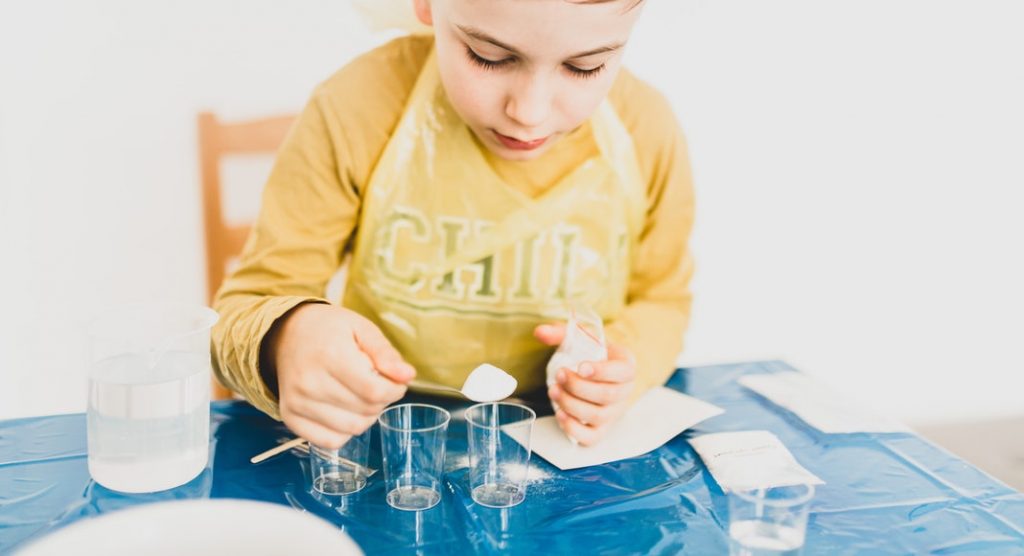 The one-year anniversary of the COVID-19 lockdown is coming up, and children have become restless. Although some of them have gone back to in-person classes, a large number of students continue to do remote learning. Most after-class activities have been canceled, and playdates are not happening as often as they used to. Most kids are frustrated with the situation. If we grownups are tired of what is going on around us, imagine how our younger kids, who cannot fully comprehend the situation, are feeling. That is why we must find at-home activities to help them pass the time—and turning your home into a science laboratory is a great option.
The one-year anniversary of the COVID-19 lockdown is coming up, and children have become restless. Although some of them have gone back to in-person classes, a large number of students continue to do remote learning. Most after-class activities have been canceled, and playdates are not happening as often as they used to. Most kids are frustrated with the situation. If we grownups are tired of what is going on around us, imagine how our younger kids, who cannot fully comprehend the situation, are feeling. That is why we must find at-home activities to help them pass the time—and turning your home into a science laboratory is a great option.
For many years, I have seen children become passionate about science through simple activities. They come to realize how fun hands-on tasks can be and end up learning more than what they normally would by simply reading about an experiment in a book. That is why I believe one of the best ways to keep kids entertained these days is by turning your home into a science laboratory. I know that sounds scary, but do not worry because these experiments are easy and will keep both your home and your children safe.
The idea behind these activities is to let them be in charge and become the scientist. I have put together three fun experiments for you to try with them:
Melting Crayons Rainbow
Select various colorful crayons and let your children melt them to create a rainbow. As we all know, playing with fire is dangerous, so they will melt the crayons with a hairdryer, not fire. Remind them they are in charge, but you are there to supervise so everything is done appropriately, and they remain safe. This is an example of a physical change because the melted wax is still the same as the wax in the crayon.
Magnetic or Not
Playing with magnets can become a fun way of spending your afternoon. Let your children select a few different objects from around your home and test them with a magnet. Teach them what happens: if the object sticks to the magnet, it is a magnetic object; otherwise, it is a non-magnetic object. This can be fun as your child runs around the house with a magnet, testing their toys! Note to the adult: some types of magnets can cause damage to some electronic items or your credit cards. Limit the experiment to the toys in the toybox or objects you know won’t be harmed!
Making It Rain
What kid doesn’t love to play in the rain? Now you can help them create their own rain with shaving cream, water, a glass, and food coloring. Help them layer the ingredients and make it rain. Start with a thick layer of water and add the shaving cream on top. Then, add drops of food coloring to the shaving cream. Keep adding food coloring until you start to see it enter the water. Talk with your child about how this is like a cloud getting so full of water that it cannot hold it anymore, so it rains! The best part about this experiment is you can later turn it into an art project with the leftover shaving cream—and who doesn’t love messy art projects? Note to the adult: by messy—I mean MESSY! The food coloring stayed on my son’s hands for about a day!
In the last few months, we have all been looking for distractions to keep us motivated and happy when things have turned ugly. Children have had a hard time adjusting to the new reality, and as parents, all we can do is provide a safe space for them to feel like the outside world is not so scary after all. These simple experiments will help them feel in control once more, and they will have fun as they learn a little bit more about science. And you will get to see your child smile once more—which, in the end, is all we want to do with these types of activities.
Stephanie Ryan has a strong background in chemistry and biology and enjoys applying her background to develop superior educational products. She is also interested in how mathematics and science intertwine. She has taught science in formal and informal settings from K-16, and developed curricula for After School Matters programs in Chicago, Illinois.
Stephanie earned her Ph.D. in the Learning Sciences from the University of Illinois at Chicago. She has an M.S. and B.S. in chemistry, from the University of Illinois at Chicago and Saint Mary’s College, respectively.
For more information, please visit http://www.etslearnaboutscience.com/.















